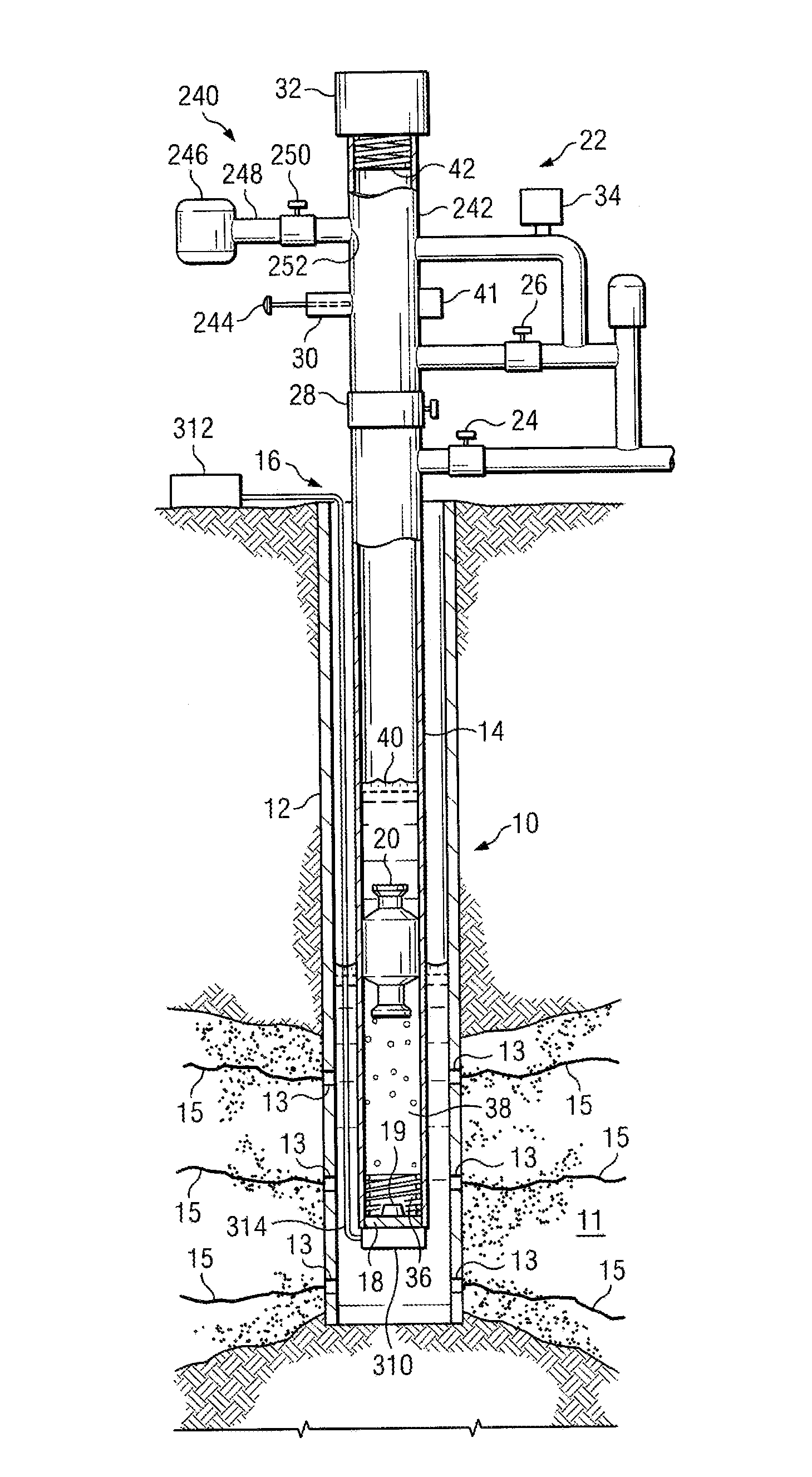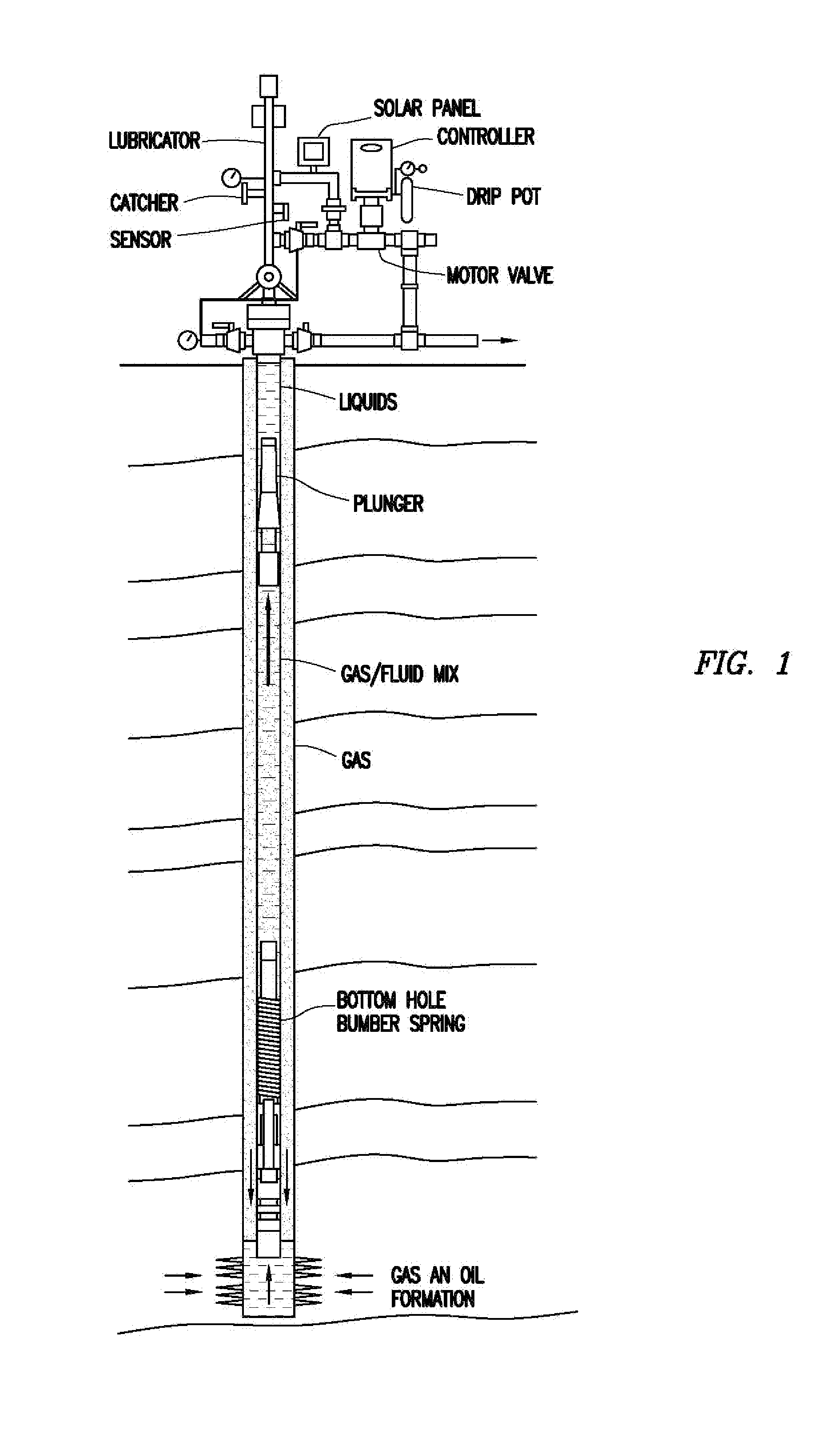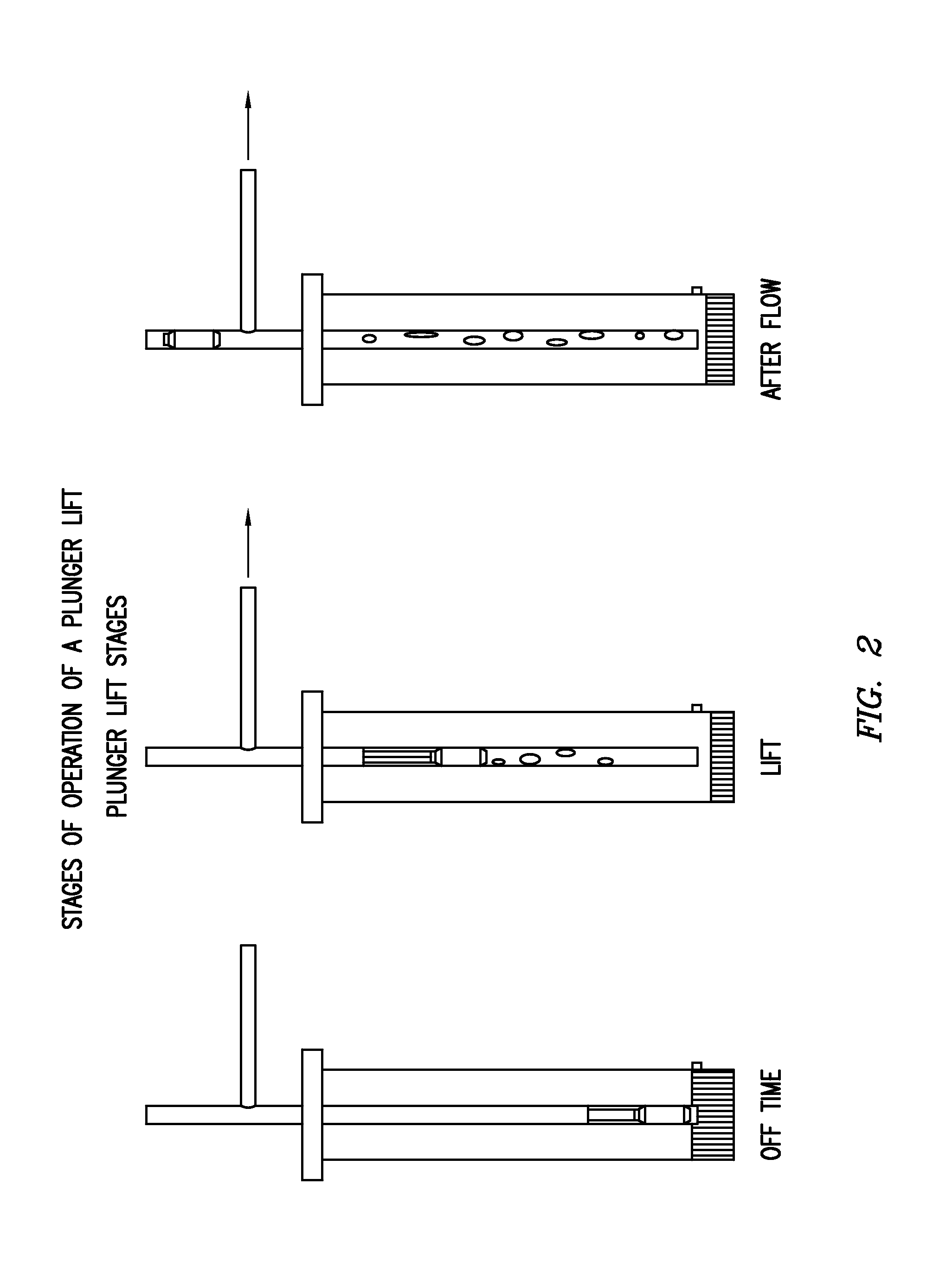Plunger lift optimization
a technology of optimizing and optimizing the oil production field, applied in the direction of positive displacement liquid engine, survey, borehole/well accessories, etc., can solve the problems of not providing the actual details needed to optimize the plunger lift control in various conditions, and addressing what optimization looks like, so as to minimize the pressure of the bottom hole, maximize the production rate, and save time and cost.
- Summary
- Abstract
- Description
- Claims
- Application Information
AI Technical Summary
Benefits of technology
Problems solved by technology
Method used
Image
Examples
Embodiment Construction
[0099]The disclosure provides novel control logic used to control a plunger lift system to maximize hydrocarbon recovery from a well. The invention comprises any of the following embodiments in any combination thereof:[0100]An improved method of optimizing a ON and OFF cycle of a plunger lift system for a well, the plunger lift system having a cased well, a plunger in the cased well moveable from a stop at the bottom of the cased well to a top of the cased well, a control valve in functional connection with the cased well, a plunger arrival sensor capable of measuring a plunger arrival velocity, a flow valve sensor capable of measuring time flow valve is open or closed, a controller in operational connection with the control valve and functional connection with the sensors for receiving signals from the sensors, wherein the improvement comprises said controller optimizing for Minimum-OFF time for said plunger, or optimizing for Minimum-ON time for said plunger, or both, based on cur...
PUM
 Login to View More
Login to View More Abstract
Description
Claims
Application Information
 Login to View More
Login to View More - R&D
- Intellectual Property
- Life Sciences
- Materials
- Tech Scout
- Unparalleled Data Quality
- Higher Quality Content
- 60% Fewer Hallucinations
Browse by: Latest US Patents, China's latest patents, Technical Efficacy Thesaurus, Application Domain, Technology Topic, Popular Technical Reports.
© 2025 PatSnap. All rights reserved.Legal|Privacy policy|Modern Slavery Act Transparency Statement|Sitemap|About US| Contact US: help@patsnap.com



